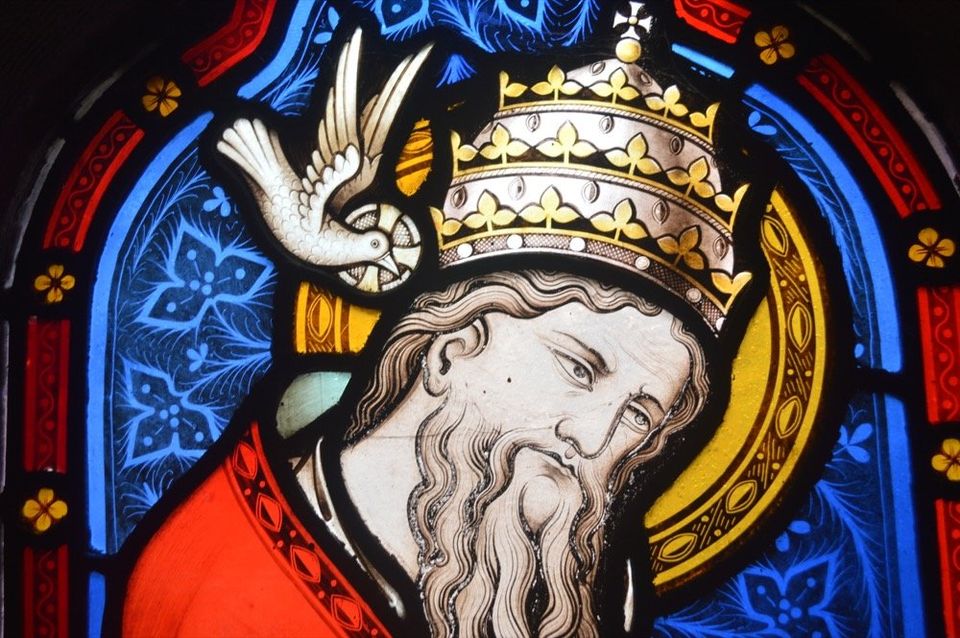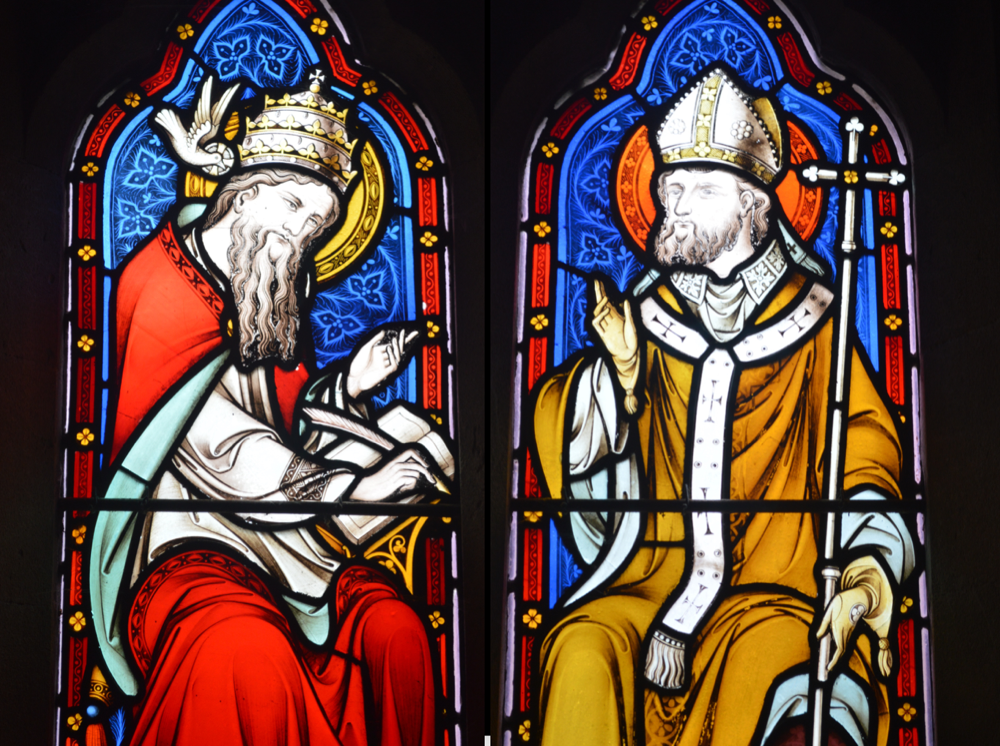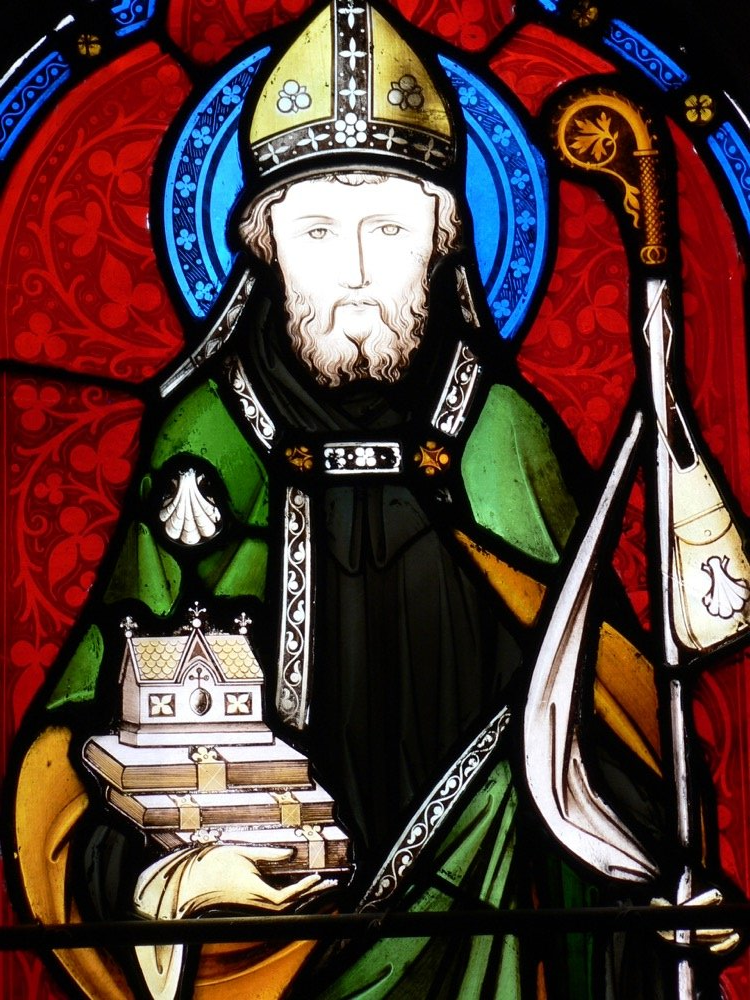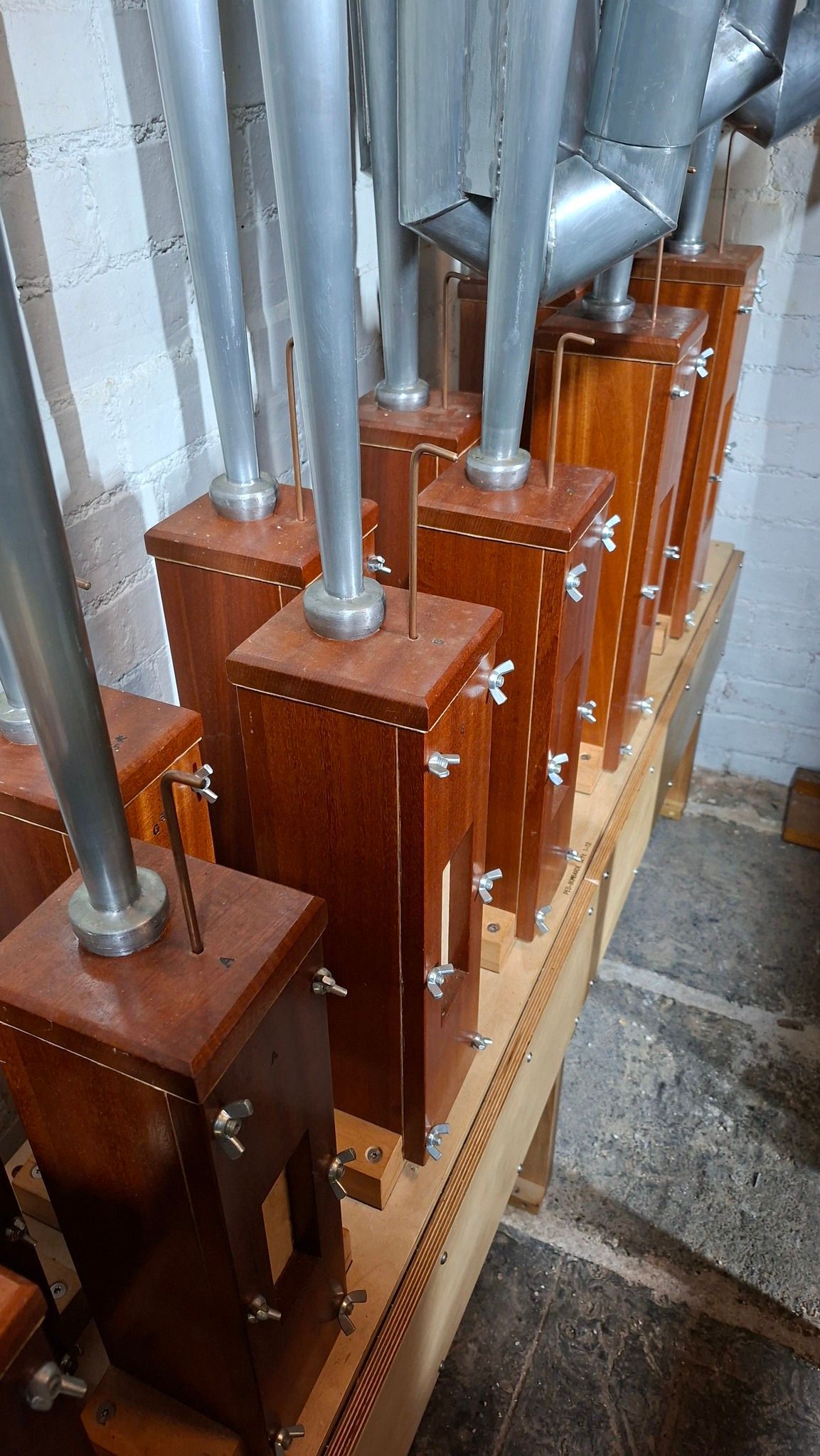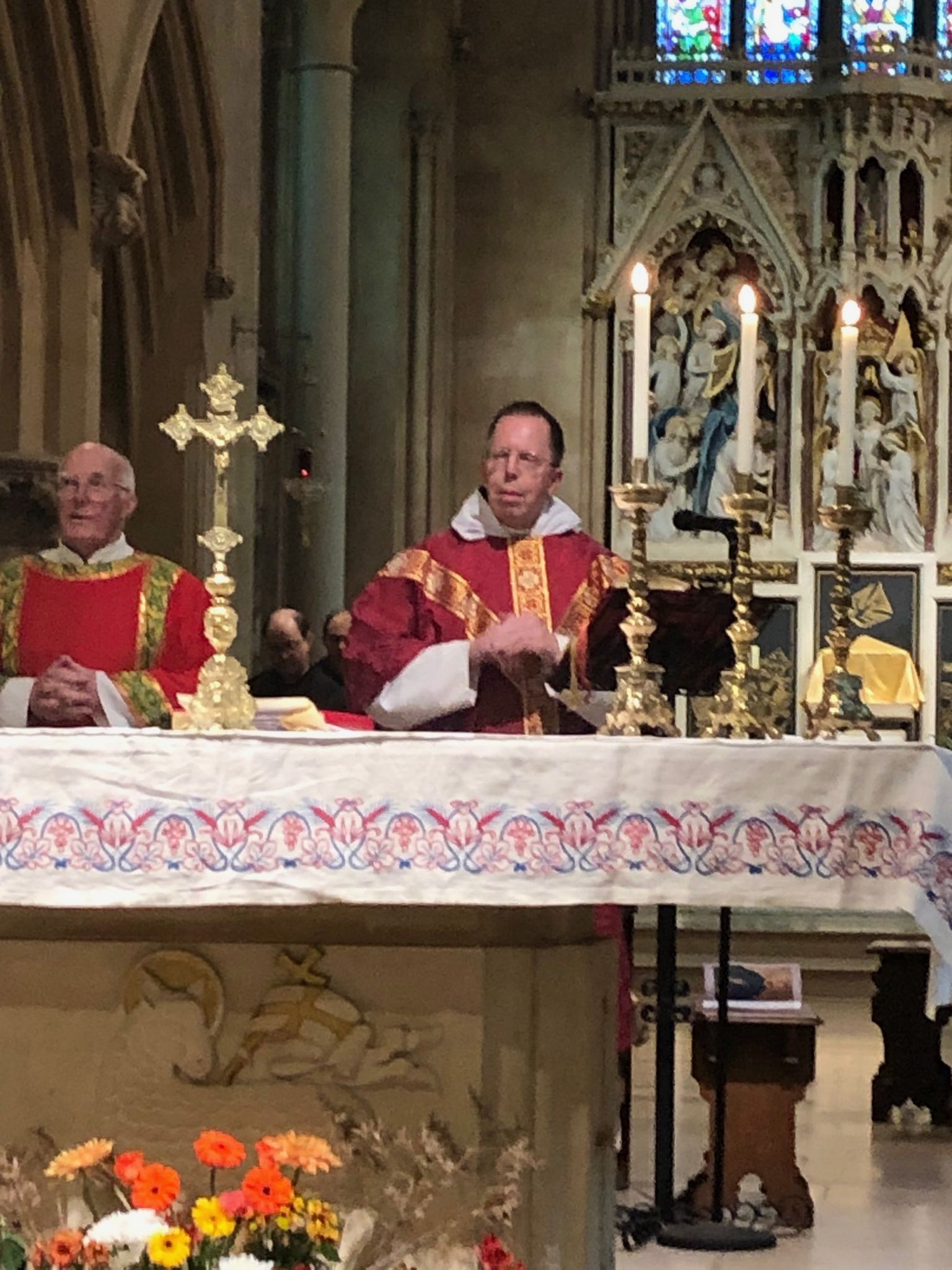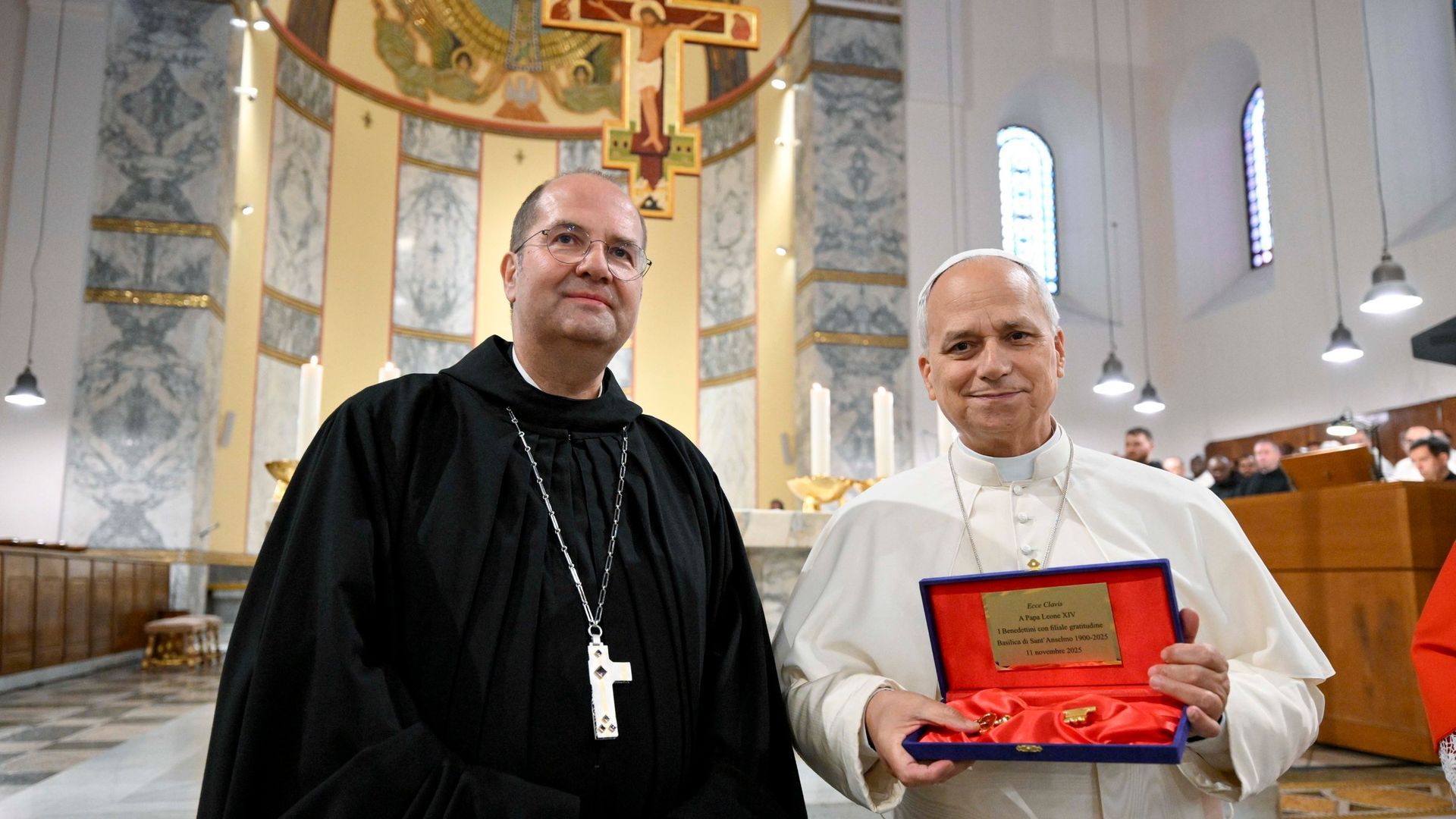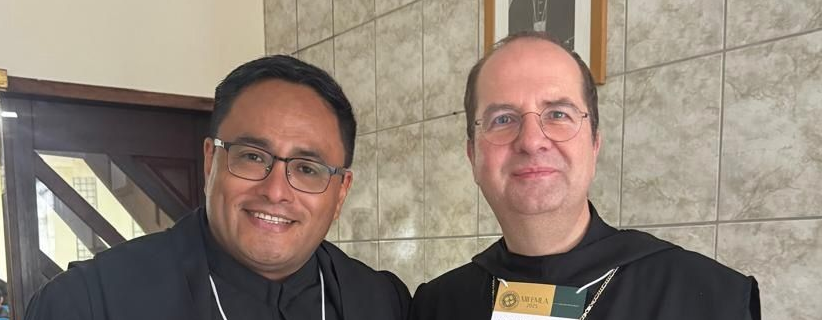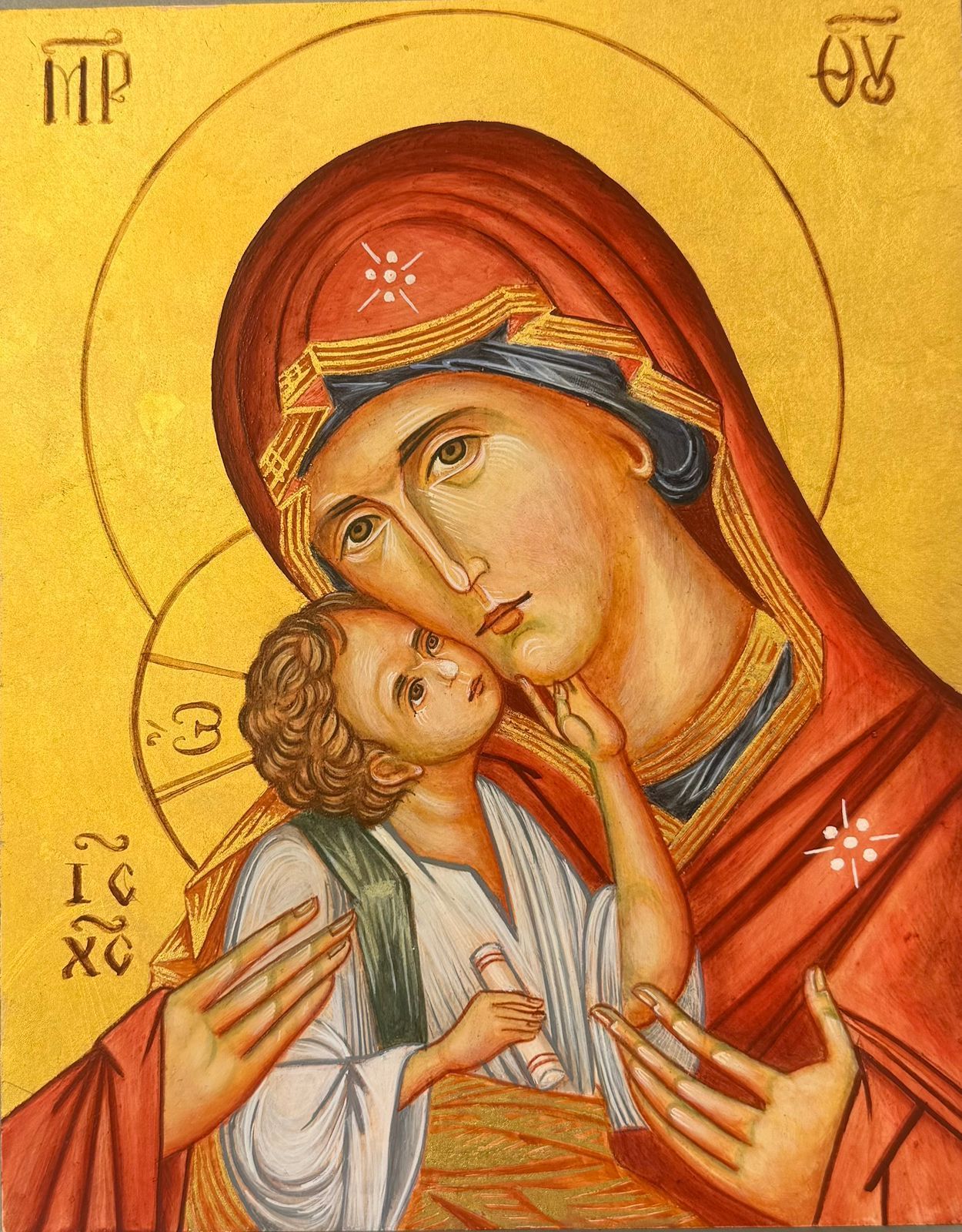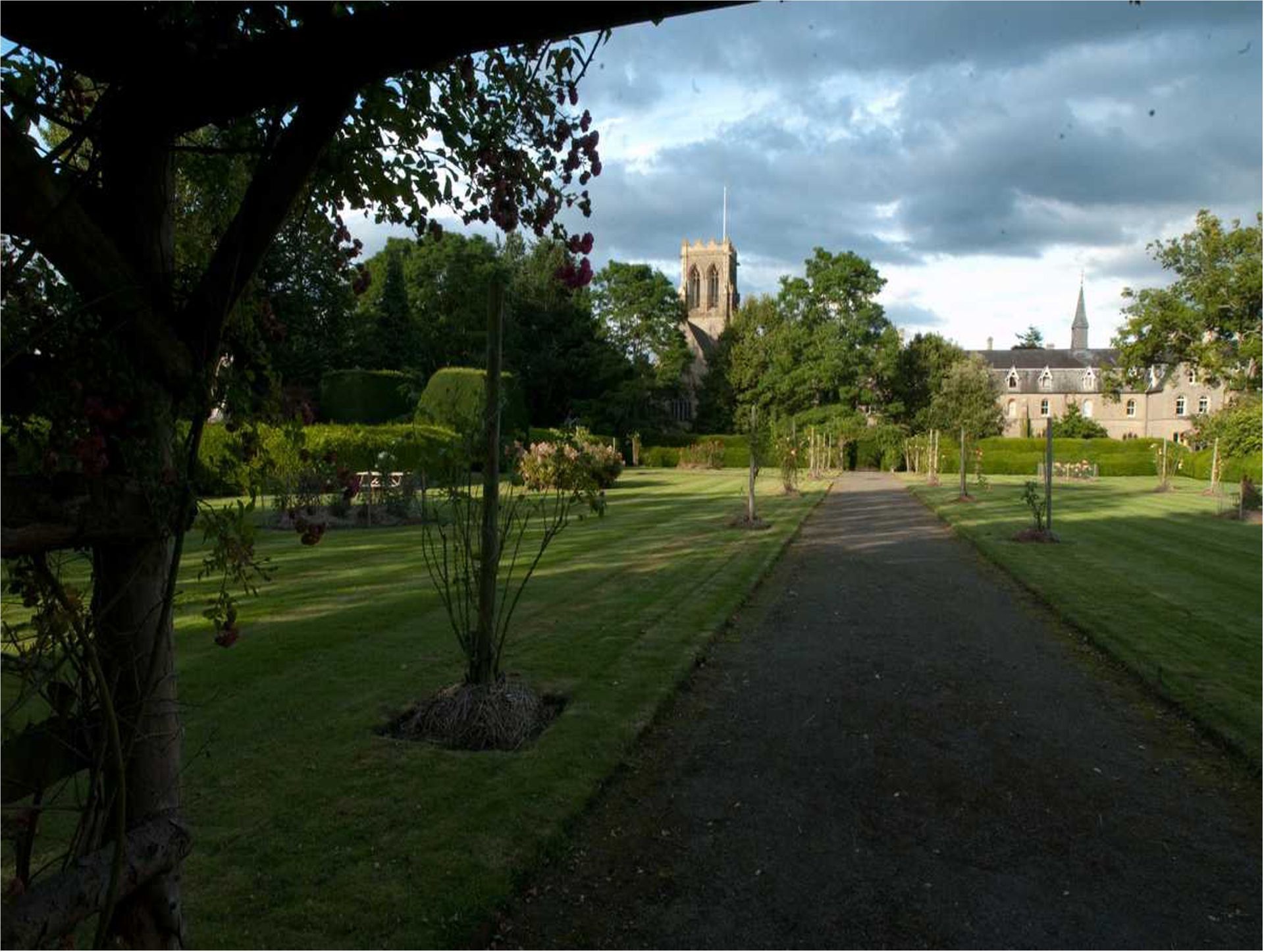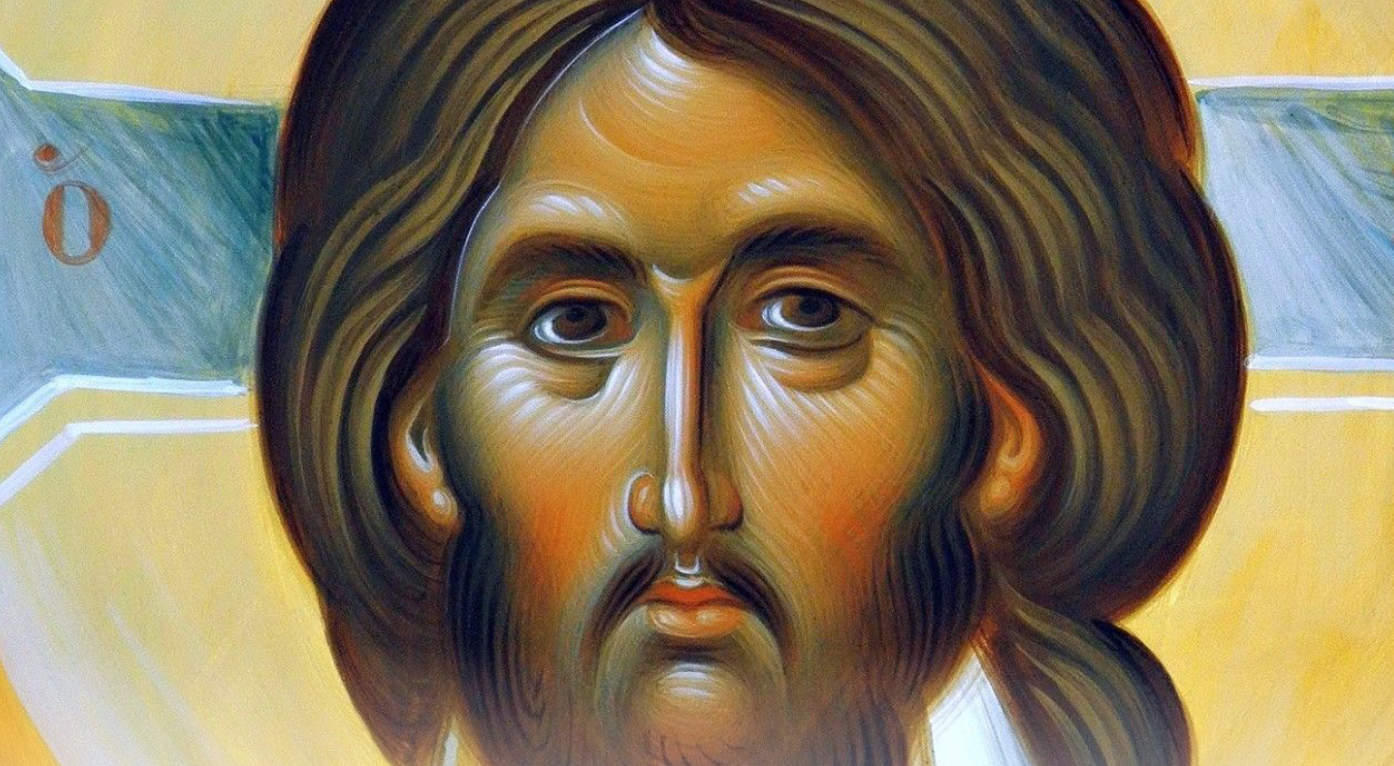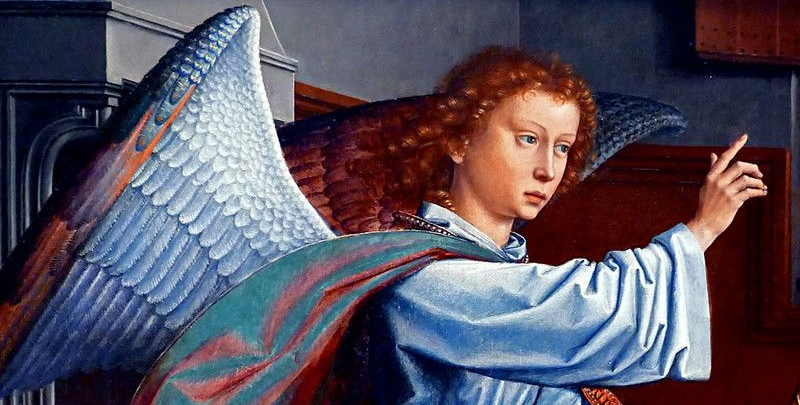St Gregory, St Augustine and the Mission to England
Monastic History in Glass and Stone (3)
How the Chapel of St Benedict, in its stained glass and carving tells us something of the whole history of Benedictine Monasticism, the importance of the English Church, and the place of Belmont in this story.
In 597 St Augustine (of Canterbury) arrived in
England on his famous mission to convert the Anglo-Saxons at the request of St Gregory
the Great (c.540-604).
portrayed in the stained glass) would be honoured as Apostles of the English and as part of their mission would establish monastic life amongst the Anglo-Saxons. The monk Paulinus (d. 644), belonged to a second group sent from Rome. He became the first Archbishop of York. Pictured with shell in hand, we might remember that he baptized the powerful Hilda of Whitby (614-680) amongst others.
In fact the Anglo-Saxons were about to make a decisive
contribution to the Benedictine story. The Rule's first recorded presence in
England was in Northumbria. It is probable that St Wilfred of York (c.633-709) brought
the rule back from Gaul in 653 and introduced it in his monasteries at Ripon
and Hexam in the north, and Salsey in the south. He had journeyed with St Benet
Biscop (628-89), a Northumbrian nobleman who was later to found the twin
monasteries of Wearmouth and Jarrow, and they were both to champion the Roman
against the Celtic observance at the Synod of Whitby in 664.
Benet Biscop, perhaps more than Wilfred, can be
called the true founder of Benedictine monasticism in England. He not only
changed his name from Witizia in honour of Benedict, but recommended the Rule’s
special authority. From the middle of the 7th century the Rule
provided the basic framework for the overwhelming majority of new foundations.
Biscop, portrayed staff in hand with the cockleshell
of a pilgrim, is a central figure in the windows. St Benedict’s strictures on
stability never seem to have stopped monks travelling, but Benet Biscop’s journeys
were for a purpose. He frequently travelled to Rome and brought back books,
icons, paintings and relics that show a love of learning and a concern for
beauty in the worship of God. These books and relics that holds would foster
the remarkable learning and holiness of Bede.

